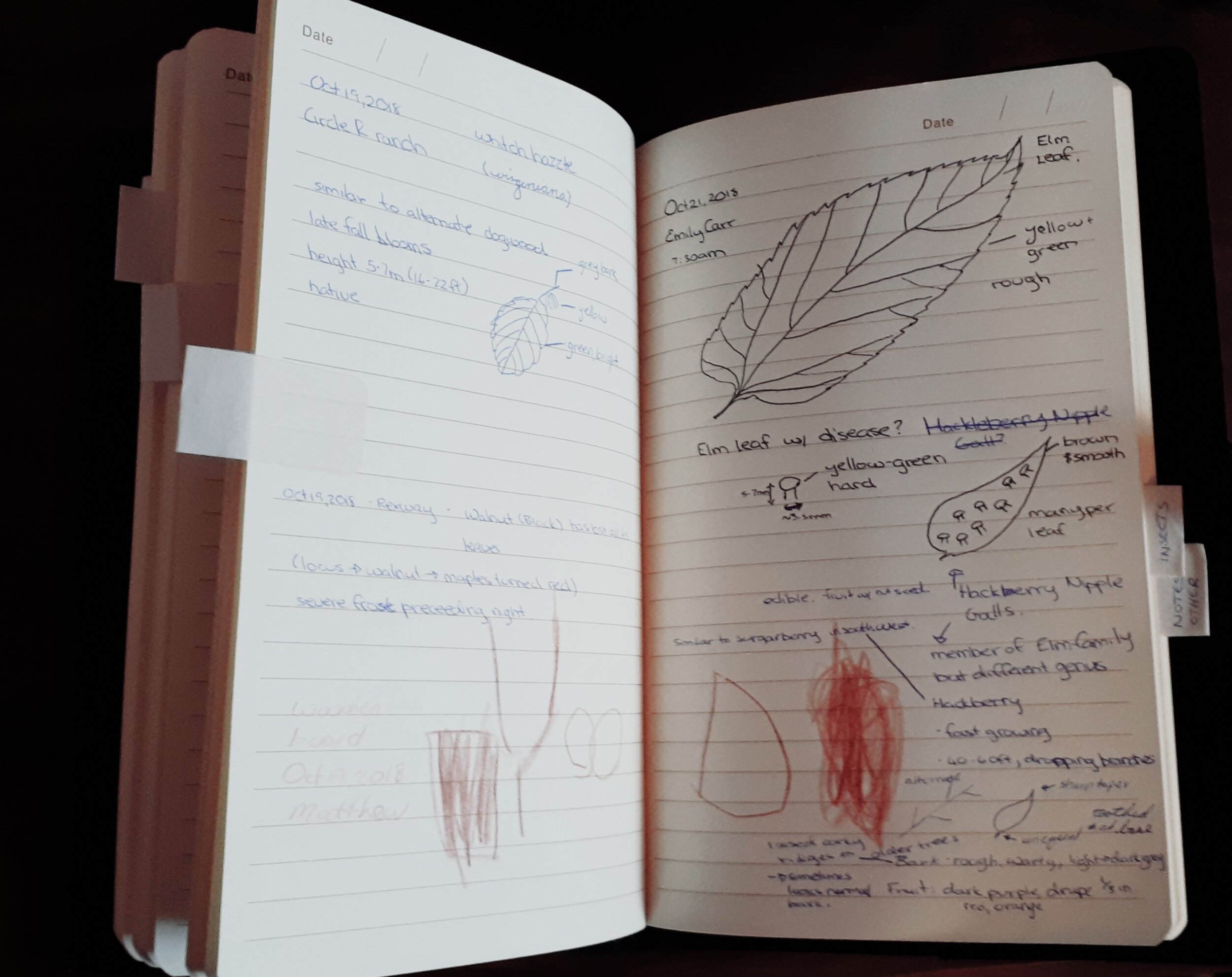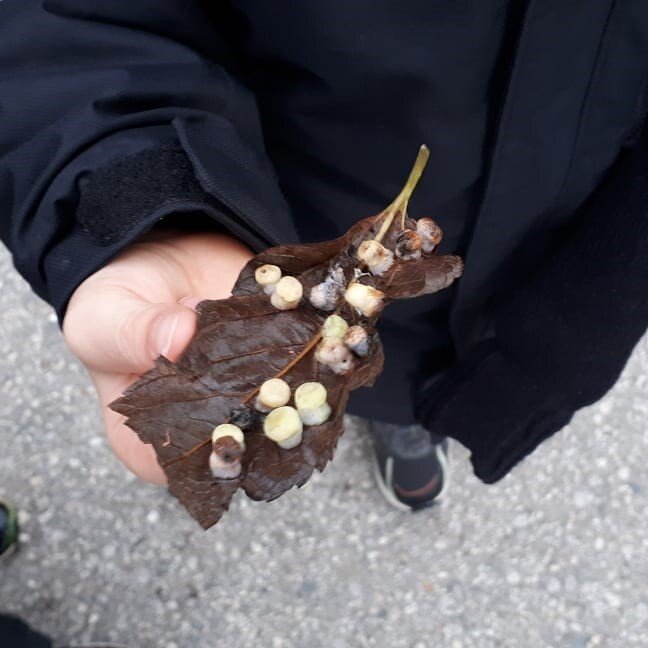WILD CHILD: Nature Journalling
Are you looking for ways to be more deliberate in your time outside?
Sometimes appreciating time outside is as simple as noticing the natural environment as you walk to and from the bus stop or the mailbox. But I often find that I am so busy rushing from place to place that I forget to look up, down and all around at the fascinating world that I am rushing through.
Recently our family started a nature journal – a simple notebook where we record things we notice or find out on our walks. Sometimes we take the book along, and sometimes we bring back a leaf or stick or photos as reminders then draw our finding in the book. This is a joint creation so it has adult and child contributions, and we also use the journal to record things we learn after coming home.
I have found the most exciting discoveries are the ones where I don’t know the answers either. What does it look like? Have we seen anything like it? Does it look like anything else you have seen before? These are fantastic questions to start the discussion as we try to find out the answer and identify our treasures.
Written by Tandy Morton, WILD CHILD Outdoor Playgroup Facilitator
P.S. If you’re wondering what is up with that leaf (we certainly were), Tandy and her family did a lot of research, and here’s what they came up with . . .
“The leaf was the shape of an elm leaf, but typically has a rough surface in our experience and this one was smooth. We guessed that they were some sort of gall (a growth of plant tissue in reaction to insects or infections (bacterial, viral, fungal).
In the end we discovered that this is a fantastic identification feature for hackberry trees, in the elm family, but different genus. It’s called Hackberry Nipple Gall.
Hackberries are fast growing trees and grow up to 40-60 feet tall. They only grow in the northeast and mid-west of North America, and in the southwest of North America, there is an almost identical tree called a sugarberry.
Their fruit is a fruit/nut hybrid, and it is apparently delicious. It can be red, orange, and dark purple, and squirrels and birds love them. If you save the seeds/nuts, you can crush them to make a paste or make something similar to almond milk. They are highly nutritious. The fruit also stays good on the tree for a long time providing a great winter food source for animals.
It also has cool bark that often grows little warts of corky bark when young, but then amalgamates into bark ridges that can be broken off when mature (not always though).”
Such a cool discovery! What can you find on your walk?


